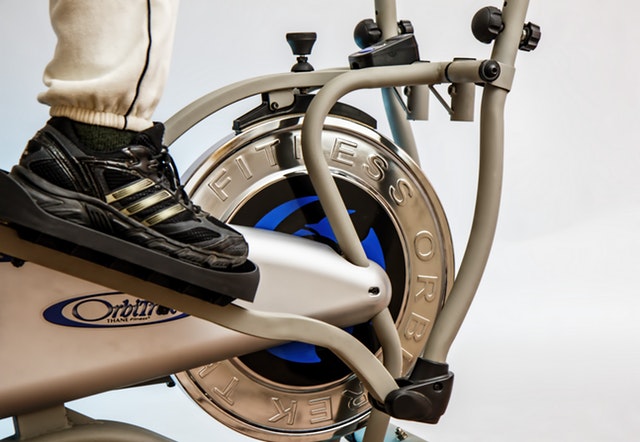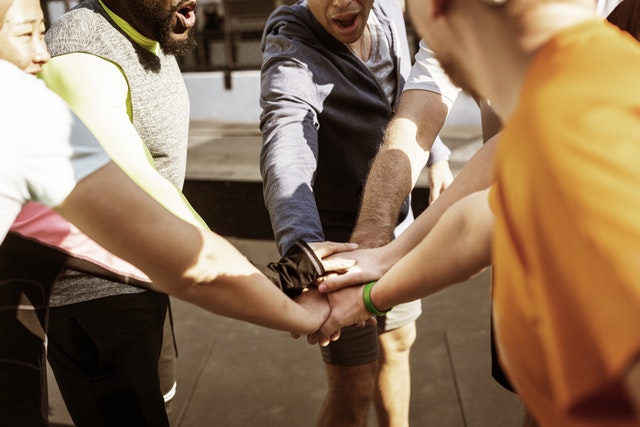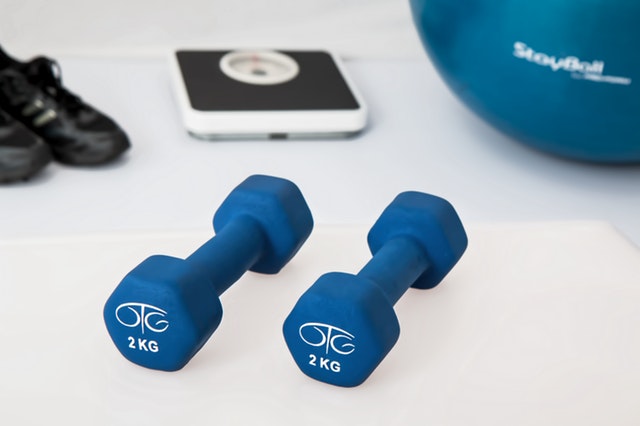Did you know September is Go4Life month? Go4Life month is, “an exercise and physical activity campaign from the National Institute on Aging at NIH…designed to help you fit exercise and physical activity into your daily life.” Inspired by Go4Life month, we’d like to share with you some of our tips for getting into (and sticking with) a regular exercise and physical activity regimen. Below are 4 common reasons people often don’t get enough physical activity, and how you can combat them. As always, you should consult a doctor before engaging in a new exercise program, especially if you have any health concerns or medical conditions.
1. Always Feeling Too Busy
Do you always feel like you have too much going on? Like you don’t have time to be physically active? Instead of trying to fit in longer exercise and physical activity periods, try working in smaller periods of activity or working physical activity into your already scheduled activities.

Exercising as little as 10-minutes at a time has real health benefits. Try to set aside a few 10-minute intervals throughout the day to exercise. To get the maximum benefits for your body, try varying your exercises throughout the day. For instance, take a brisk walk in the morning and then do some body weight strength training in the afternoon. In the evening you could do some balancing exercises and a few good stretches for flexibility before bedtime. If you still find yourself unable to squeeze in dedicated exercise time work with the time you do have. If you have only a few minutes, use that time to exercise.
In addition to exercise, recent studies show we also need to be more physically active throughout the day. Being inactive for lengthy periods risk the potential to undo many of exercise’s benefits and can contribute to heart disease, high blood pressure, obesity, increased risk of falls, and feelings of depression and anxiety. There are many ways to get more physical activity into your daily life without disrupting your regular activities. Here are some to try:

• Take the stairs instead of the escalator or take the escalator instead of the elevator and try to walk at least a few steps if you’re able to do so safely.
• Clean your house
• Set yourself an alarm to get up and move for at least 3 minutes every 30 minutes, or at least 5 minutes every hour.
• Walk or bike ride to your errands or to work when possible.
• Have walking meetings and walking lunches at work.
• When meeting with friends and family, center things around some kind of physical activity, you’ll be a great amount of physical activity while you create wonderful memories.
• If you need to spend long periods of time sitting consider investing in a foot/hand elliptical machine that will keep you physically engaged while you sit
2. Motivation
Whether it’s lack of interest or physical limits getting in the way, it’s not always easy to be motivated to exercise or be more active. There are, however, several ways you can work around this and increase your motivation and your physical activity.
Do What You Find Fun
Not into running? Try recreational swimming. Tennis doesn’t interest you? Sign up for some dancing lessons. You love team sports? Why not look into local baseball, basketball, and bowling leagues?
If you haven’t found an activity or exercise yet that really engages you, don’t give up! Keep trying new activities until you find the one that fits your needs and desires. Maybe your local park or community college has a tai chi or yoga class, you could start a neighborhood team sports or running league, and the internet is a great place to search for local groups looking to meetup for a variety of activities for all ages and abilities. And while you’re trying new things and finding the right activity for you you’ll be doing yourself a double-service—learning and trying new things keeps your body and brain active!

Use the Buddy System
Exercising alone can be hard. That’s where having an exercise friend(s) can come in handy! There are a variety of ways to make sure you have the social motivation to exercise—you can have a regular meeting with a friend to exercise together, you can join a local league or group of exercisers, or you can sign up for a fitness class that gives you a standing commitment each week.
If you prefer to exercise alone, but still need the motivation of a friend, that’s no problem! Having an exercise partner to motivate you can be as simple as checking in with each other on a regular basis to make sure you’re meeting your exercise and activity goals. The best part about the “buddy system” is it not only motivates you, it motivates both of you.
Set a Reminder
For many people, getting into an exercise and activity routine is as simple as scheduling it. Download a fitness tracker on your phone or print an exercise calendar from online (you’ll find hundreds for free if you search “exercise calendar” or “fitness calendar”). Decide what activities or exercise you’ll do on which days and log them. Finally, set yourself reminders or put your calendar in a place where you’ll see it often. You’ll be surprised at how much more active you become!
3. Safety
It’s always important to be safe when being active. Whether you’re in perfect health, recovering from a setback, or dealing with a chronic condition, it’s crucial to be safe while still being active. Here are a few tips to keep you safe while you stay active:
Don’t Push Too Hard, Too Fast
If you’re new to exercise or if you’re coming back to an exercise regimen after a break, take it slow and be careful. Working out too vigorously can cause injury and further derail your fitness plans.
Listen to Your Body
Exercise is about finding the appropriate level of activity for your body, not pushing yourself to an extreme. Speak with a medical profession to talk about what activities are appropriate for you. Track improvements in your health and fitness and use those to judge whether or not your exercise and physical activity is too much. And if you’re experiencing pain due to your exercise routine stop and seek advice from a health professional.

Be Aware of Your Surroundings 
Whether you’re inside or outside, make sure you pay attention to your surroundings as you’re staying active. Check the weather before you go outside and pay attention to changes in weather, insect activity, and pollen levels.
If you’ll be going outside, know the route you plan to take and how long you’ll be gone. If you’re going alone tell someone else your plans (or carry a cell phone) so they can be alerted if you need to call for help. And if the weather is cold make sure to wear layers—sweat cools off a body rapidly and can chill you after your body cools down from exercising. Watch out for cracks in pavement, fallen branches, or holes that could trip you or cause you to lose your footing. If you’re exercising indoors make sure you clear enough space for the activity you’ll be doing. Clean small objects off the floor you may trip over, and don’t exercise near furniture.
4. Expense
Money is a common concern and many people don’t have the money (or desire) to buy exercise equipment. They can’t afford monthly gym passes and may think they “can’t afford” to exercise. In reality, though, anyone can exercise, regardless of income! You may not be able to sign up for a membership at a fancy new gym, but there are ways to exercise and be active within any budget, including these:

Use Your Body
The freest and most available exercise equipment is your own body. You can take a walk or a run, practice yoga or tai chi, or strength train using your own body weight (think push-ups, squats, etc.). Of course, if you have equipment already, like a bicycle, go for a bike ride, or engage in other sports. If going outside isn’t a good option, walk around your house or engage in an activity like mall walking.
Cheaper Alternatives to Fancy Equipment
Another alternative is to look for cheaper equipment. Jumping rope is a very effective workout for your whole body, and jump ropes can be purchased for only a few dollars. You can also look at local used sporting goods stores and thrift stores or the web for used exercise equipment. You can even make your own weights out of soup cans and water bottles!
Less Expensive Ways to Learn
Check your local offices on aging, senior centers, and libraries to see what, if any, fitness programs they may provide and if any are available for free. If you have health insurance or Medicare check with your provider to see if you’re eligible for any free or reduced-cost gym memberships, fitness programs, or other health initiatives.
Other low-cost ways to learn an exercise are buying a fitness DVD or book, or checking one out from your local library. You can also look at websites like YouTube, which carries hundreds of fitness and exercise videos in a wide range of activities for people of all abilities, for free.
Get Going!
Increasing your physical activity and exercise isn’t always easy. There can be obstacles or setbacks, but the he benefits of physical activity and exercise are numerous: increased fitness and well-being, relief and improvement of many chronic conditions, improved mental health, social engagement, and beyond! Thank you for reading, now take a break from all this reading and get moving!
To find your local Area Office on Aging, call the toll-free number at: 1-877-222-3737


